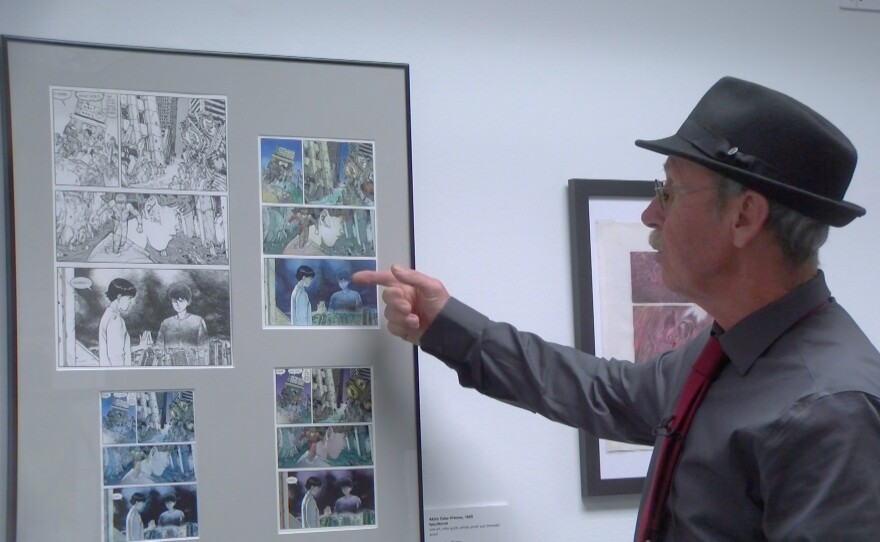Comic-Con Museum recently opened a trio of new exhibits. One of them looks to "The Godfather of Coloring," Steve Oliff and how his 45-year career coloring comics reveals the evolution of comic book color.
In simple terms, a comic book colorist takes black and white line art and adds color. But it’s easy for readers to take a colorist’s work for granted and not fully appreciate how it impacts every page.
"I call color the silent soundtrack," Steve Oliff explained. "Because you can tell the story underneath, and people don't even think about it. It's just like they're looking at the art, they're reading the story, but the color actually enhances the storytelling."

Since the mid-1970s, Steve Oliff has enhanced tens of thousands of pages of comics, from the "Incredible Hulk" to "Akira." He’s been around long enough to see the tools of his trade change from paintbrushes and inks to computers. Oliff wanted to educate people on the evolution of comic book coloring with an exhibit at the Comic-Con Museum called "Big Dots to the Digital Universe."
"Comic books came out of the newspaper tradition, and it was cheap paper," Oliff said. "They wanted a cheap product, so they had a very limited palette."
A palette that started with just four colors that were printed using small dots that could be printed close together, widely apart or overlapping. The colors were cyan, magenta, yellow and black, commonly referred to as CMYK.

"And CMYK are the colors of printing that every magazine, everything that's printed in color, generally is printed using those four colors," Oliff explained. "And depending upon the percentages of each of those colors they would usually get 64 colors and they had to try to make it work. That's not very much to work with."
But that’s what Oliff had to work with when he started coloring comics nearly 50 years ago.
Oliff pointed out an interactive display at the exhibit where visitors can lift the four different layers of old 3M color keys to reveal how each of the CMYK colors affect the art.

"They would break it down into four different layers so you could see each of the printing plates, the yellow, the magenta, the blue, and the colors just keep getting richer and thicker. And then finally, the black or the K tone ties it all together."
But then came the Japanese manga "Akira" that changed everything. Oliff was hired to color the black and white line art for an American publication of the Japanese comic book.

"'Akira' was the first actual comic book that was colored for production using a computer," Oliff said. "It would start with the line artwork that came from Japan. Then we would take a reduced copy, and then we'd do our color guide, then it would go to my computer crew and they would do their computer color separation. And one thing that was great about computers, if you wanted to change something, you could, whereas if you did it by hand, it's very difficult."

The exhibit takes visitor through the stages of how Oliff colored comics over the decades.
"The technology has reached a level where the only thing that will hold anybody back from coloring well is their talent and their vision," Oliff said.
Oliff’s career provides the perfect canvas for appreciating the art of the colorist and how the process of creating comics has changed. The exhibit will run through next August at the Comic-Con Museum in Balboa Park.
Also, check out this Comic-Con@Home video panel about how comic book colors used to be hand-separated by an army of women in Connecticut and that there was a technical reason why African-American skin tones looked wrong in old comics.





